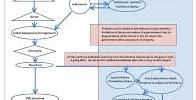Criminal assessment agencies that use risk assessment techniques are better able to identify those who need to be locked up and incarcerate fewer persons overall. Researchers from Simon Fraser University conducted a thorough analysis of data from more than a million offenders across 30 different Canadian and American research locations and discovered that while fewer people were being imprisoned, crime rates were actually declining.
“This demonstrates that we can minimize incarceration without jeopardizing public safety,” says SFU psychology professor Jodi Viljoen. The American Psychological Association has published a paper outlining her findings. “Rather than incarcerating everyone, the key is to make sure that we are incarcerating those people who truly pose a risk to public safety.”
Identifying who will be violent has proven challenging for judges, psychologists, and other specialists who make these choices. Early studies revealed that predictions made by experts were accurate fewer than half the time.
Researchers have been creating decision-making tools for risk assessment over the past 30 years that are based on hundreds of studies. These offer a methodical way to determine whether someone is likely to use violence in the future.
From years of working in prisons, I have seen how prisons can be schools for crime. For instance, if you were to take a teenager who’s never gotten in trouble before and put them in a confined space with a lot of people who are already heavily involved in crime, that teenager won’t necessarily turn into a good law-abiding citizen. Instead, they might learn new ways of committing crimes.
Jodi Viljoen
Such tools offer a list of violent risk factors and instructions for grading these characteristics, ensuring that experts take the proper information into account.
“While these violence risk assessment tools are not perfect, research demonstrates that they lead to more accurate predictions than relying on our hunches or intuitions,” says Viljoen.
Today, criminal justice systems frequently employ technologies to decide how to punish offenders and when to get them out of prison. Nearly all of the provinces and states in Canada, the United States, and at least 40 other nations use tools. These resources not only assist experts in making more accurate predictions regarding acts of violence, but they also assist in ensuring that only those who require incarceration are housed there.
“To protect the safety of the public, incarceration is sometimes necessary. However, many people who we jail are not dangerous. Many are poor and have mental illnesses and addictions. Some are teenagers who have made poor decisions. And some have not even been found guilty they’re still waiting for their trial.”
Cramming these people into prison doesn’t make us safer, she says. “From years of working in prisons, I have seen how prisons can be schools for crime. For instance, if you were to take a teenager who’s never gotten in trouble before and put them in a confined space with a lot of people who are already heavily involved in crime, that teenager won’t necessarily turn into a good law-abiding citizen. Instead, they might learn new ways of committing crimes.”
Prisons also cost a lot of money to operate. In Canada, taxpayers pay an average of $114,000/year per prisoner. In the U.S., which has one of the highest incarceration rates in the world, the total state expenditure on prisons is at least $81 billion.
“It’s cheaper to provide effective treatment than it is put someone behind bars,” says Viljoen, “and now we are seeing that it’s a lot more likely to reduce crime.”
















